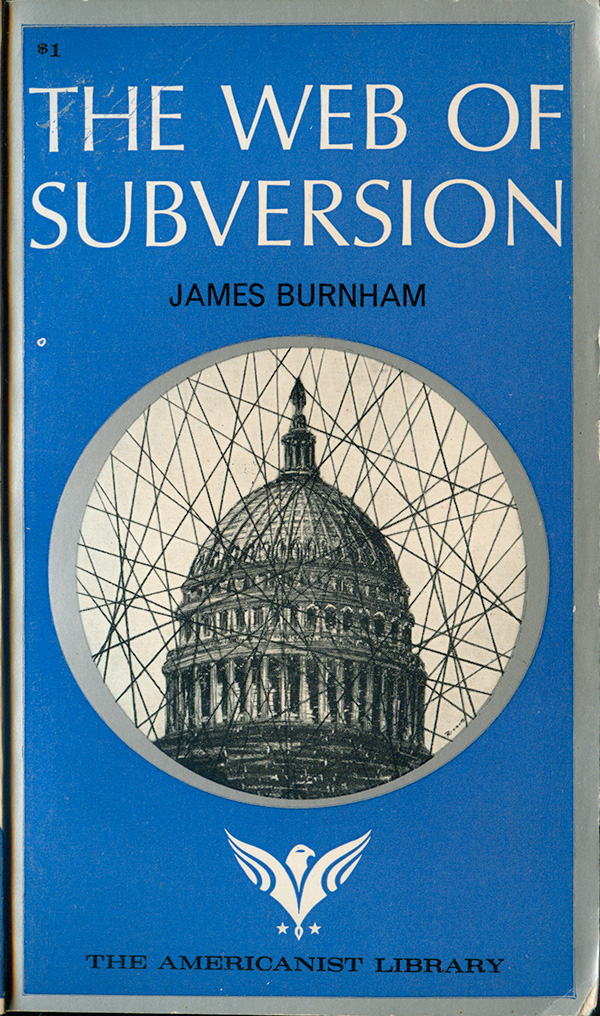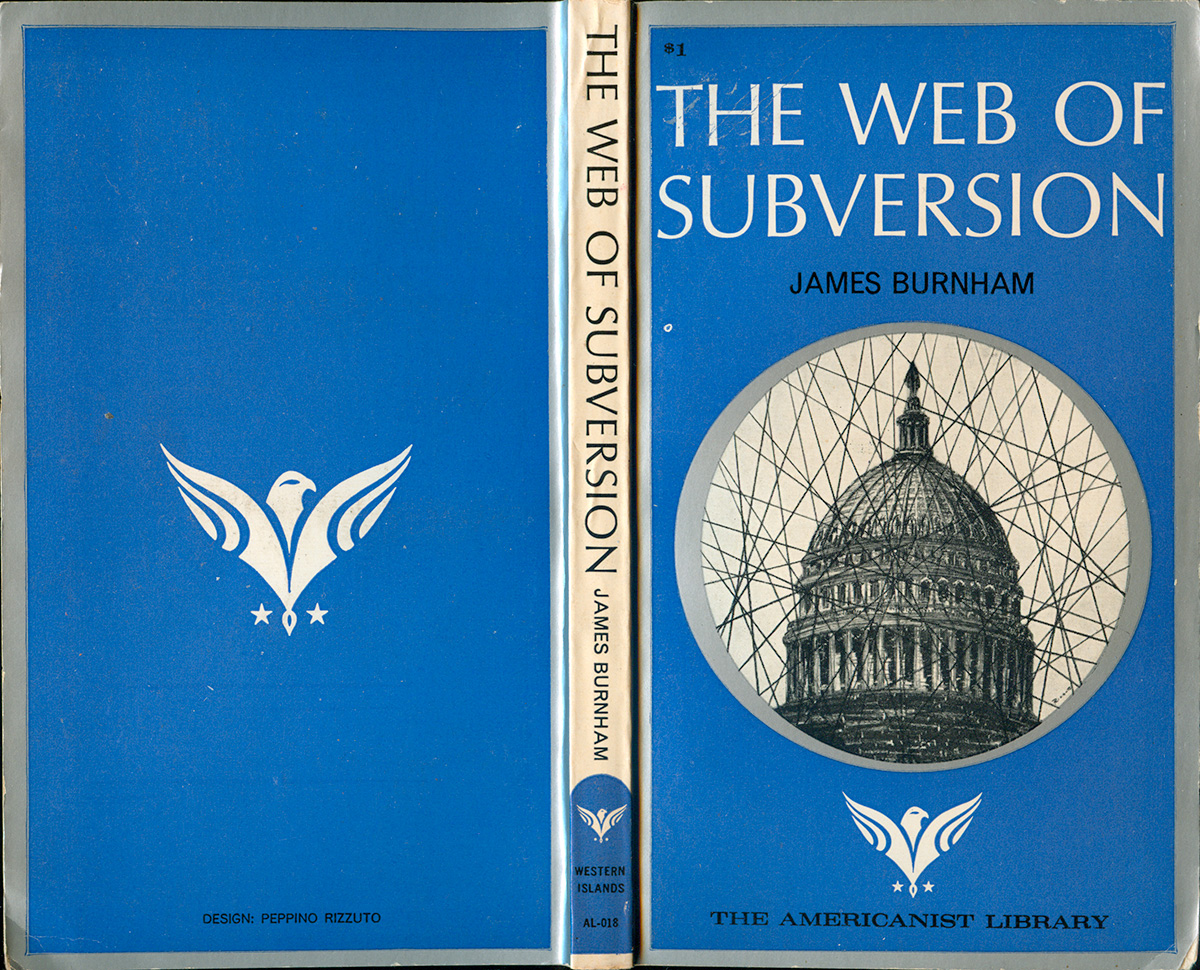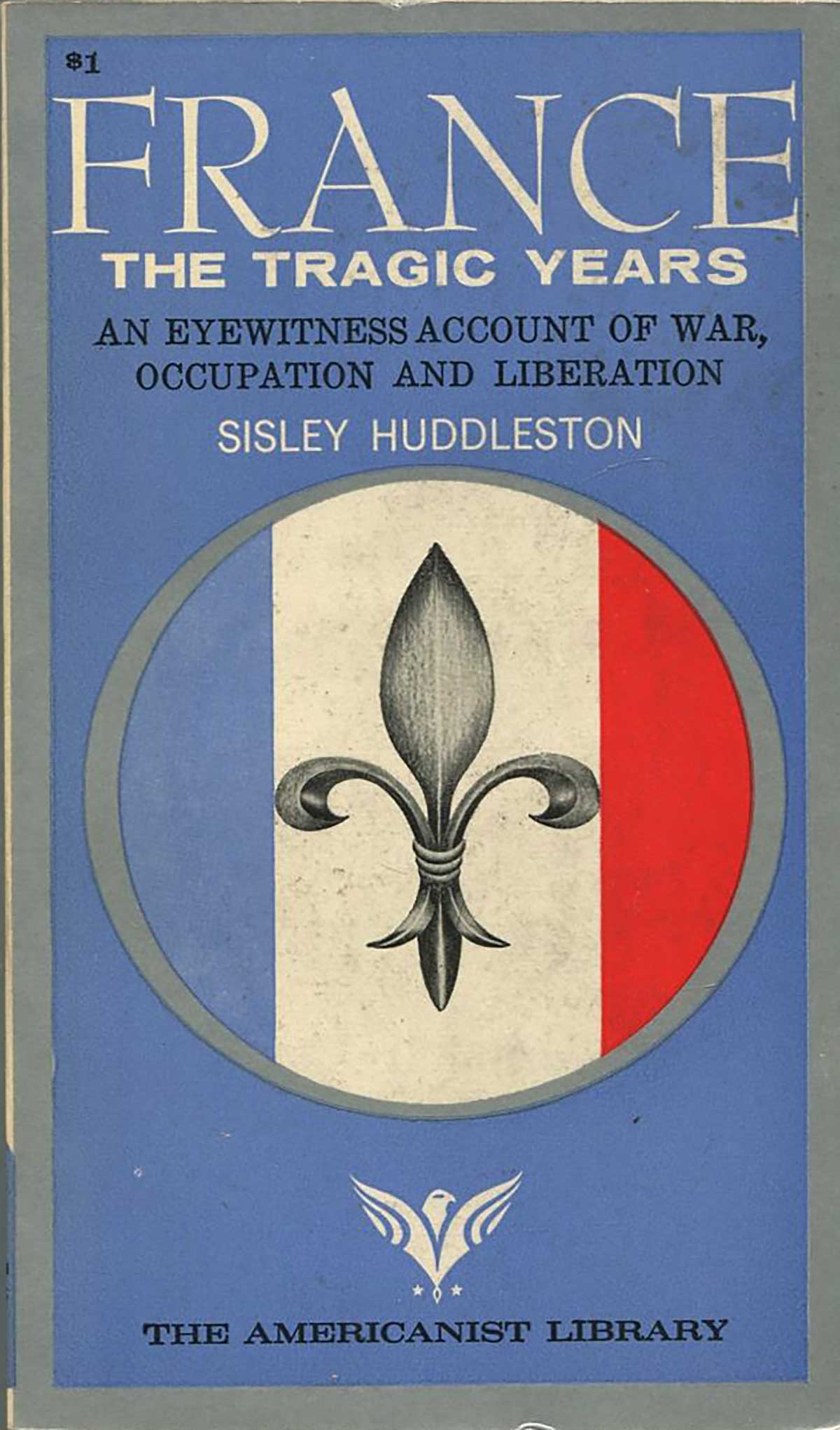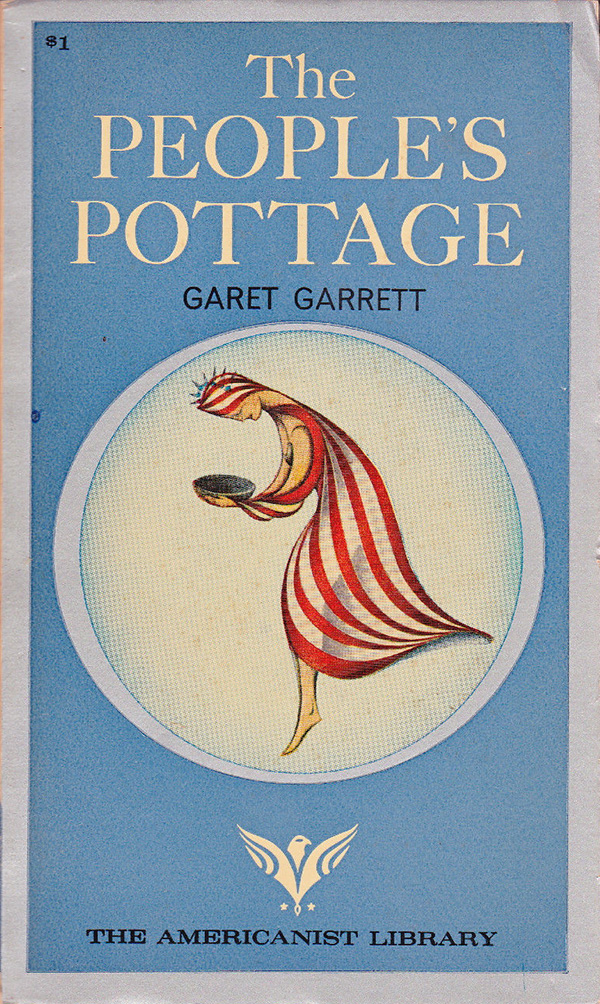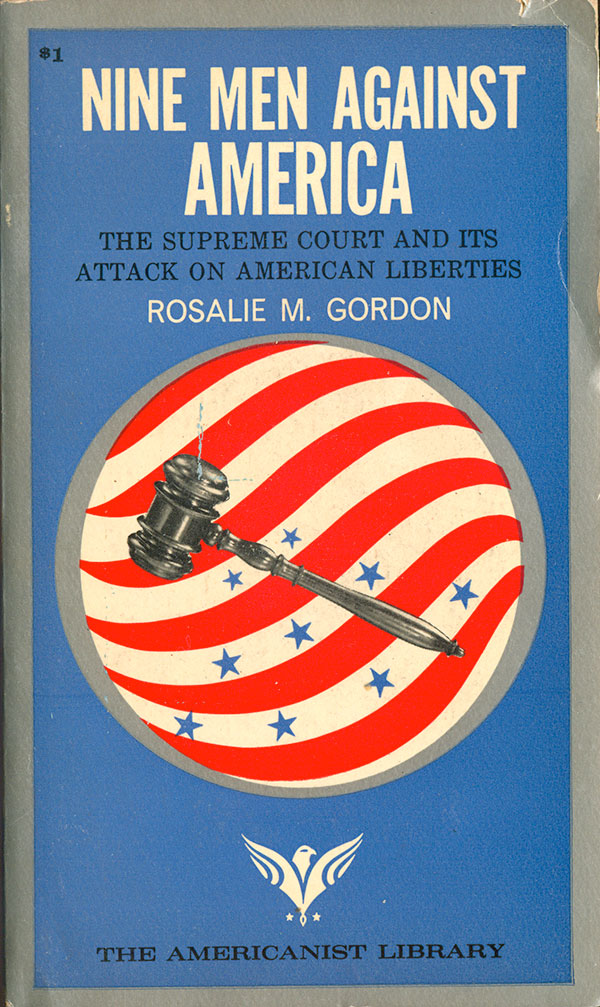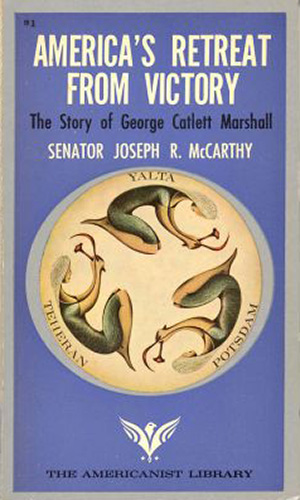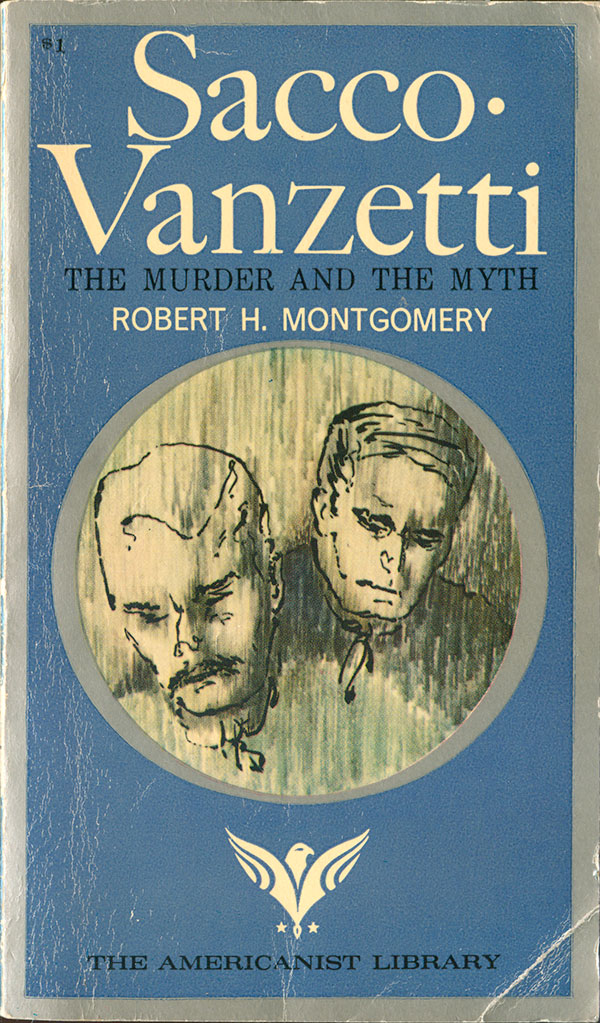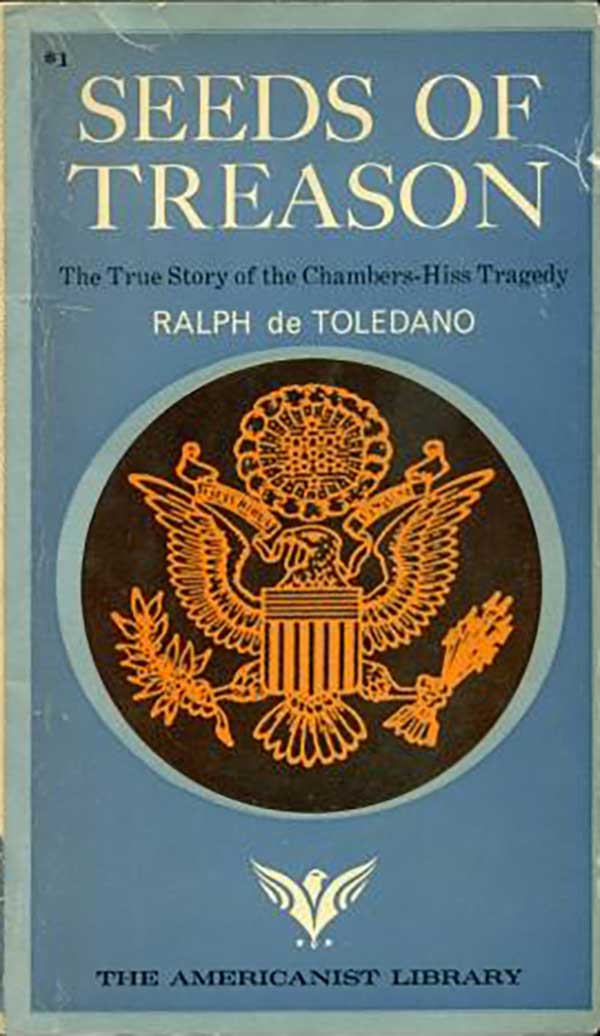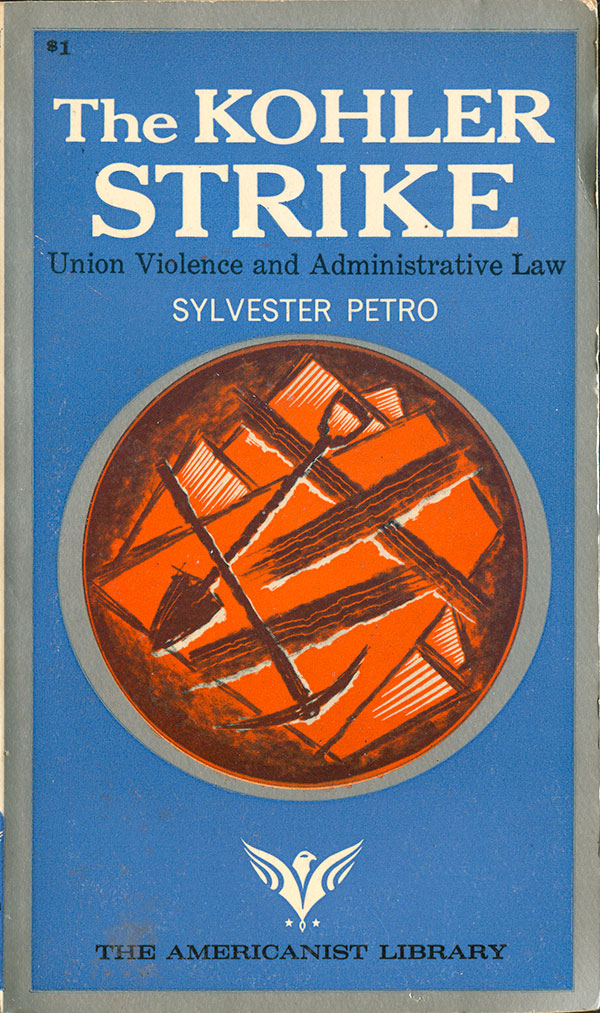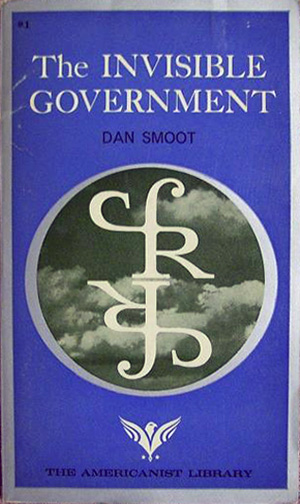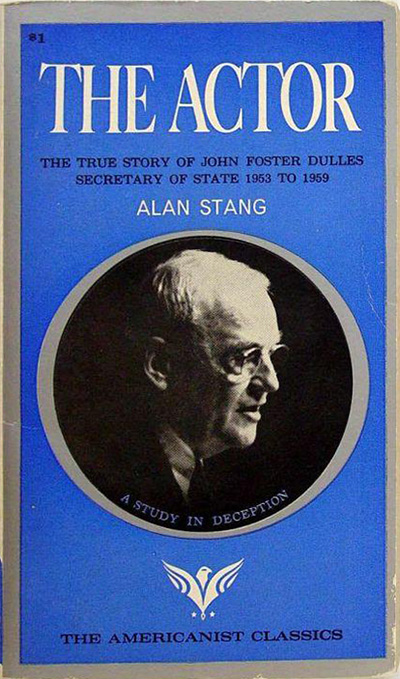https://ia803009.us.archive.org/12/items/TheWebOfSubversionJamesBurnham/The_Web_of_Subversion_-_James_Burnham.pdf
This week we swing from left to far right, Africa to Belmont, Massachusetts. Sorry for the whiplash. The Americanist Library is a collection of almost twenty mass market paperbacks put out by Western Islands, the publishing wing of the extreme right-wing John Birch Society. Chronicling the book covers of the far right is not normally what I do here, but hell, they’re interesting and they’re political. I first stumbled on Western Islands at a used bookshop in Los Angeles (where else?), when I found the book above: The Web of Subversion. The cover is amazing, with the capital tangled up in a crazed set of intersecting lines and connections. The active illustration is offset by a classic frame, silver circle within silver rectangle, on a field of regal blue. Good stuff.
Turns out I was pulling at the tail end of a little gold mine, this being the eighteenth book in the series (all appear to be published in 1965), which includes volumes about strikes, anarchists, spies, communists, traitors, and so much other awesome stuff, all seen through the lens of fanatical anti-communist lunatics!
The basic cover design is the same for each book, all done by Peppino Rizzuto. I assume he also did each of the cover illustrations, as none of them have individual artists attributed, and most are stylistically similar. The back covers match the front in simplicity, with the same silver border, rich blue field, and then the press logo—an eagle with its wings outstretched into flag-like stripes, sitting on a couple of stars, of course. The bird also becomes both book and pen nib, a volume written by freedom!
The two books below are about Asia’s communist turn (China, Vietnam, Cambodia, N. Korea, etc.), bemoaning how we “lost” them. This all looks quite silly in the contemporary context of Vietnam and China’s full embrace of market systems and logics. Below these two I’ve discussed certain covers when interesting ideas emerged, but left others without comment.
The Whole of Their Lives is an expose about how the Communist Party controls people, and the cover illustration is an interesting visual articulation of this. The shared head outlines are supposed to illustrate the terrors of collectivism, but they can just as easily be read as an articulation of how “we are all connected.” This speaks directly to how much as designers and artists we assume our audience will see things through the same lens we created them. (An aside: Max Eastman, who wrote the foreword, was the editor of the socialist/anarchist paper The Masses from 1912-1917, but then went on to become a free-market ideologue and virulent anti-communist in the 1940s/50s.)
While at initial glance, the portraits of Sacco and Vanzetti on the cover of Montgomery’s book below look sympathetic, it’s a rouse. To cut straight through the feigned neutrality, we can skip straight to the last line of the book: the “myth” of their innocence is “the Greatest Lie of all.”
The cover image on The Kohler Strike is one of my favorites—there is something about the composition of the tools, and the burning orange, that remind me of Orozco’s Man of Fire. On the cover of Smoots’ The Invisible Government is a enigmatic “CFR” floating in the clouds. This logo stands for the Council on Foreign Relations, a shady Trilateral Commission-type entity made up of bankers supposedly trying to rule the world. Of course the ruling class seem to be doing just fine ruling the world without their crypto-fascist clubhouses, but alas, how can a rational materialist analysis of how capitalism functions hold up against conspiracy theories about lizard people? At least we know that people had to contend with these idiots fifty years ago, and they weren’t created by 9/11.
The cover of the Shanghai Conspiracy is the most successful of the “comic” covers (like the dragon on While You Slept and blinded figure on The People’s Pottage, both above). The three figures are simultaneously creepy and sad, their fedoras and red glowing eyes seeming as much a burden as accoutrements of sneaky spy-craft.
When I originally published this post back in 2014, I couldn’t find what seemed like a key title in the series: Booker T. Washington’s Up From Slavery. I even suspected that it might not really exist. But I eventually found it, at a little used bookstore in Grand Rapids, MI. In 1965, the John Birch Society was upwards of 100% white, yet they had no problem absorbing Booker T. into their narrative of American individualism and market ingenuity. And to add some frosting to the cake, at the time they were republishing Washington, they were simultaneously claiming the the Civil Rights Movement was entirely the fabrication of a small group of Communists in order to destroy America!
[Post updated with additional images and information on 01/07/18.]













